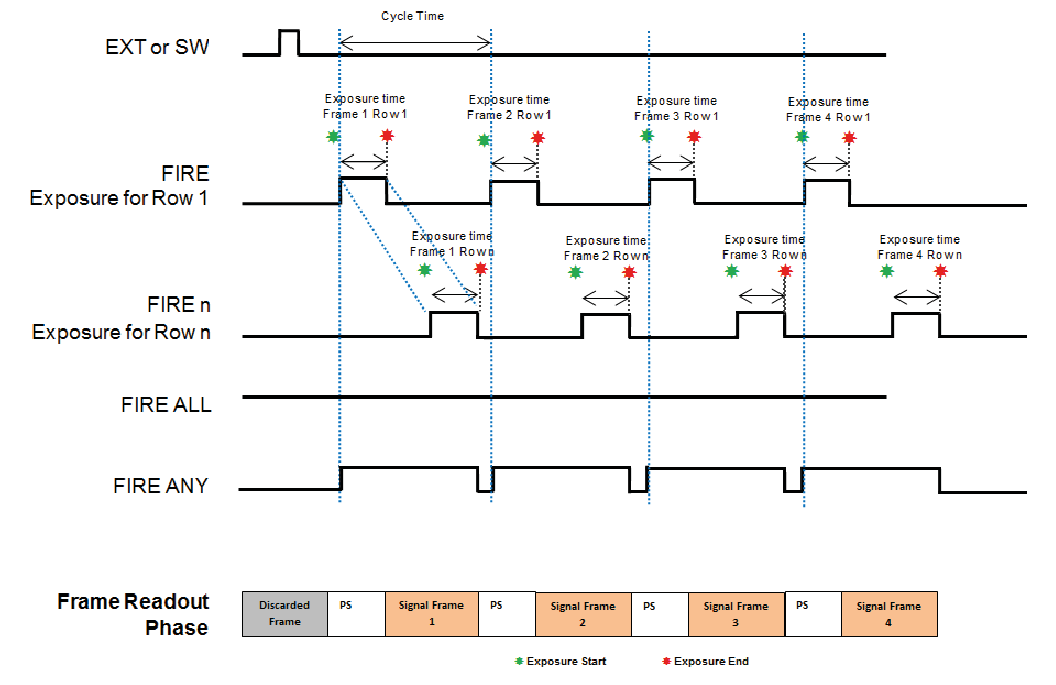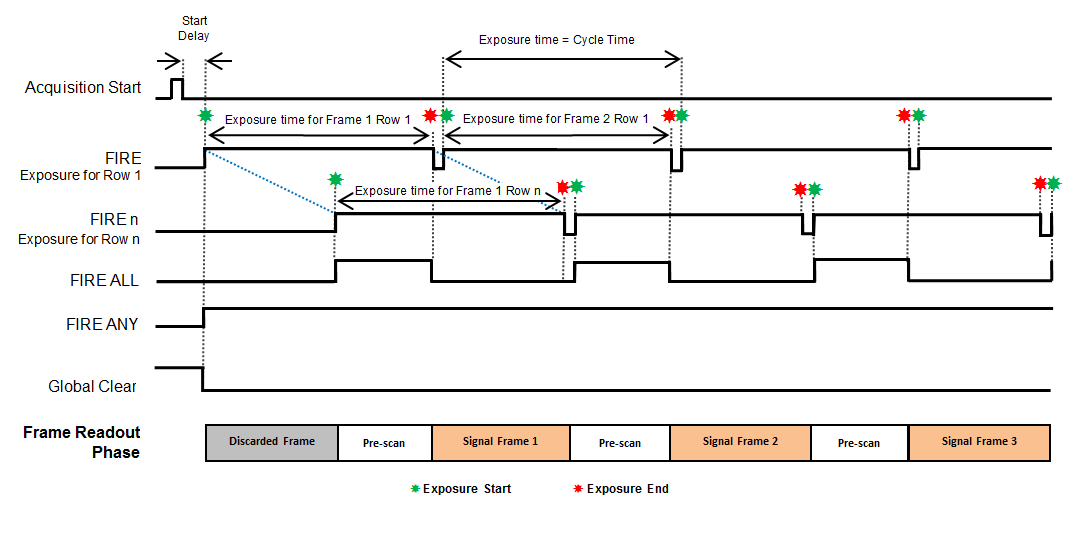Rolling Shutter Internal Triggering (Overlap Mode)
Internal Triggering in Overlap Mode allows the user to perform an exposure and acquire images from the sensor simultaneously. This is achieved by starting a new exposure for a new frame while the current frame’s exposure is being read out from the sensor.
The cycle time is the same as the exposure time entered by the user in this scenario.
Short Exposures
When the required exposure time is less than the time it takes to read out a frame (Short Exposures), the cycle time is always defined by the time taken to read out a frame.

Rolling Shutter Internal Triggering (Short Exposures)
Rolling Shutter Internal Triggering (Overlap Mode- Short Exposures) Timing Parameters
| Parameter | Minimum | Maximum |
|---|---|---|
| Exposure | 1 Row | 1 Frame - 1 Row |
| Cycle Time (1/Frame Rate) | 1 Frame | 1 Frame + Exposure + 1 Row |
| Acquisition Start Delay | 1 Row | - |
Long Exposures
When the required exposure time is greater than the time it takes to read out a frame (Long Exposures), the cycle time is defined by the exposure time.
Initially, the entire sensor is held in a global clear state to ensure that there is no charge build-up on the sensor. Global Clear goes LOW and the first frame read out is initiated. This frame is discarded as it does not contain the correct exposure period. Reading out this first frame effectively begins the first exposure. When the exposure period has completed, a signal frame read out phase begins. As each row is read out, the new exposure for that row begins.

Rolling Shutter Internal Triggering (Overlap Mode) (Long Exposures)
Rolling Shutter Internal Triggering (Overlap Mode- Long Exposures) Timing Parameters
| Parameter | Minimum | Maximum |
|---|---|---|
| Exposure | 1 Row | 30 s |
| Cycle Time (1/Frame Rate) | Exposure Time | Exposure time+ 1 Frame |
| Acquisition Start Delay | 1 Row | - |